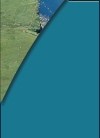St. Enid came to "Aran of the Saints" to found a monastery in 490 and many
other saints including St. Brenan studied here before Viking raiders destroyed
the monastery. (Teaghlach Bheanain, St. Brendan's little stone oratory can be
found on Inismore.)
A rare example of a 17th century Irish mansion formerly the stronghold of the
Clanrickardes. The runis of a small Dominican priory (1425)
lie in the castle grounds.
(Church of the son of Duach)
(5km from Gort on the Corofin road). King Guaire of Gort donated the site to
his kinsman, St. Colman in the 6th century.
The monastic remains are striking and encompass a Church of Ireland cathedral,
part of which dates from the 10th century; an excellent example of a leaning
round tower structure; John the Baptist's church and St. Mary's Church, also in
ruins. There is a tower house north of the cathedral which served as the abbot's house.
There is also a small monastery
The ruins of a Dominican Priory, (built in 1241 and suppressed in 1652 by
Cromwellian forces), contains the tomb of Lady Mathilda Birmingham and other
interesting grave slabs.
(Cill Cholgáin - The Church of Colga)
The village is named after St. Cloga, who left Iona in the 6th century to
found his own monastery. (Which now lies under the Protestant church)
Kilcolgan castle overlooks the estuary of the Dunkellin River and was once
the home of the St. George family who also owned Tyrone House (now in ruin).
Drumacoo, an ancient churchsite, dedicated to St. Sourney, contains the St.
George family vault.
 Described as the treasure house of the Celtic Revival, with its stained
glass windows, metalwork, woodcarving, sculpure and textiles by a myriad
of Irish artists. St. Brenans life is portrayed here. There is a perfect
statue of the Virgin and Child and the diocesan museum is also worth a visit.
Described as the treasure house of the Celtic Revival, with its stained
glass windows, metalwork, woodcarving, sculpure and textiles by a myriad
of Irish artists. St. Brenans life is portrayed here. There is a perfect
statue of the Virgin and Child and the diocesan museum is also worth a visit.
 Next Next
|


 Described as the treasure house of the Celtic Revival, with its stained
glass windows, metalwork, woodcarving, sculpure and textiles by a myriad
of Irish artists. St. Brenans life is portrayed here. There is a perfect
statue of the Virgin and Child and the diocesan museum is also worth a visit.
Described as the treasure house of the Celtic Revival, with its stained
glass windows, metalwork, woodcarving, sculpure and textiles by a myriad
of Irish artists. St. Brenans life is portrayed here. There is a perfect
statue of the Virgin and Child and the diocesan museum is also worth a visit.